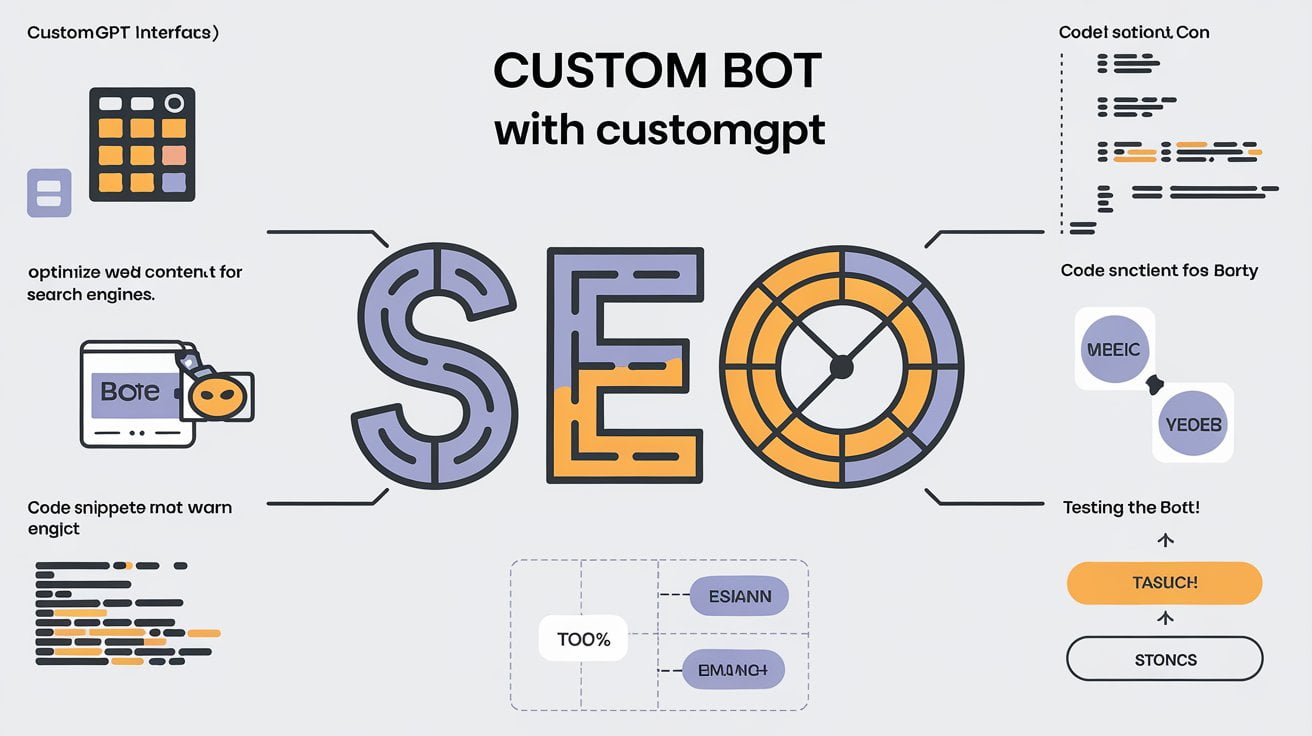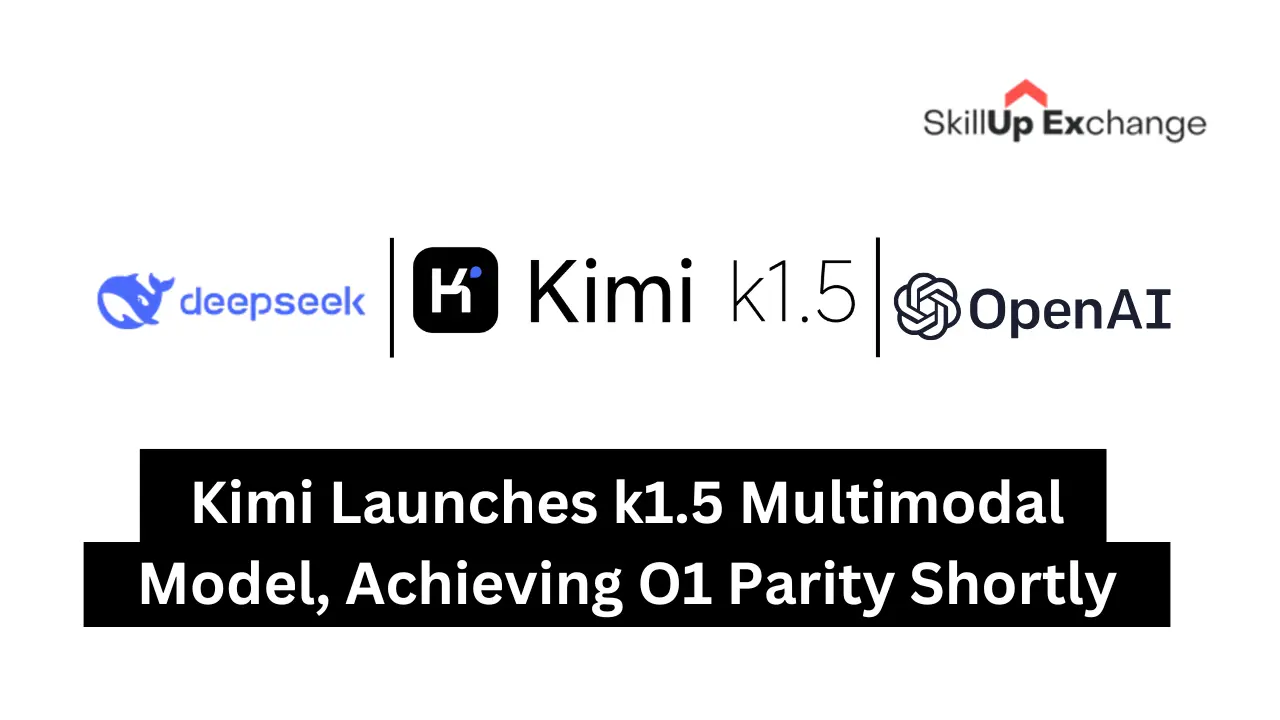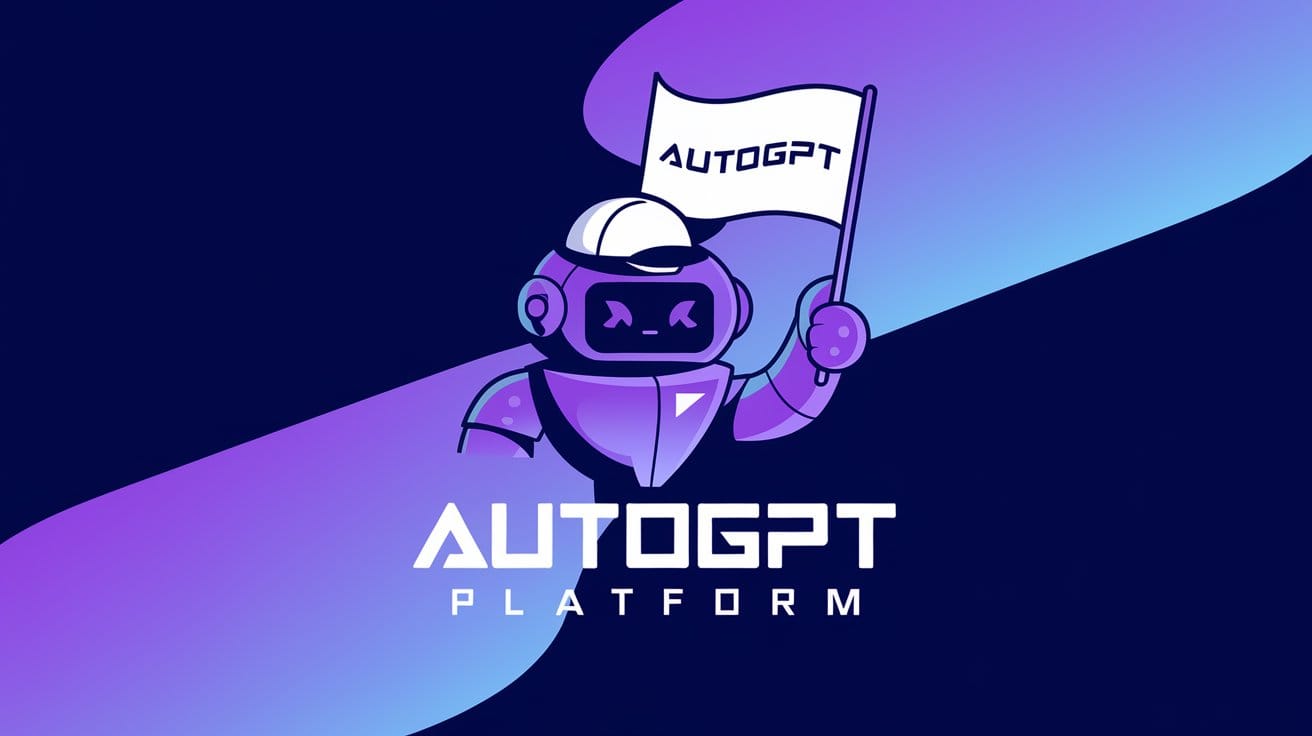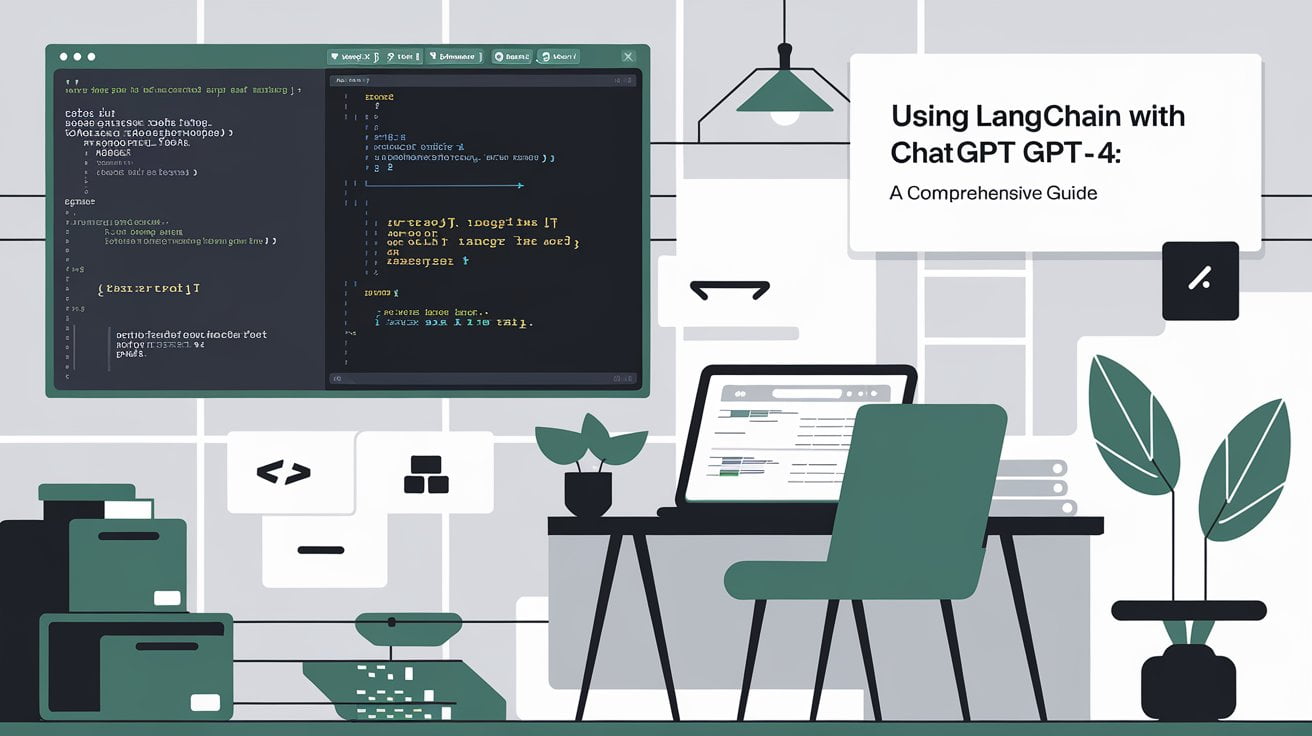Transforming M&A Transactions: How Smart Contracts Simplify and Streamline Deals
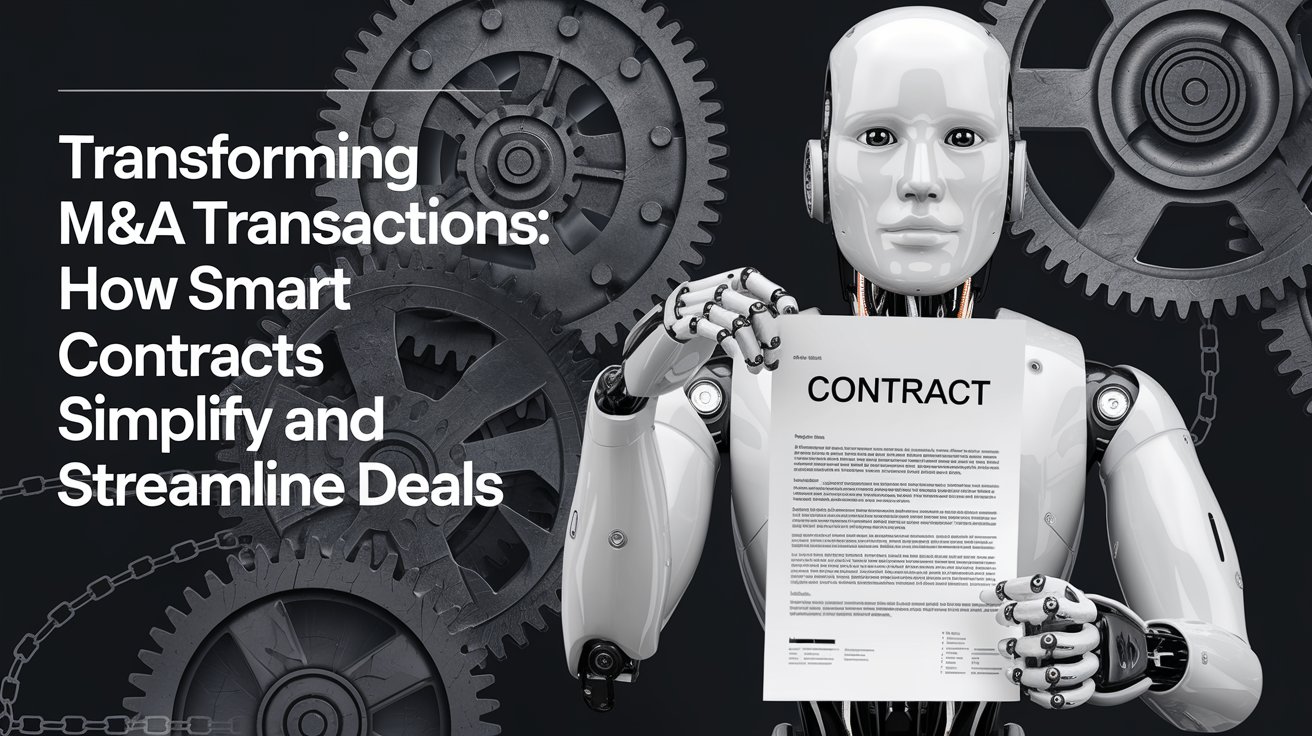
Mergers and Acquisitions (M&A) are complex transactions that involve multiple stakeholders, extensive documentation, and rigorous regulatory scrutiny. The intricacies and high stakes of M&A can lead to significant challenges, which innovative technologies like smart contracts can help mitigate. Smart contracts, powered by blockchain technology, provide a promising avenue for streamlining M&A processes through automation and enhanced transparency.
Understanding Smart Contracts in Brief
- Definition: Smart contracts are self-executing agreements where the terms are directly encoded into a blockchain. These contracts eliminate the need for intermediaries by functioning autonomously, ensuring compliance with all contractual obligations without requiring manual oversight or external enforcement. By leveraging the decentralized nature of blockchain, smart contracts provide enhanced efficiency, accuracy, and security, making them an innovative solution for modern transactional needs.
- Key Features:
- Immutability: Once deployed, smart contracts are resistant to alteration, ensuring reliability and consistency throughout their lifecycle. This permanence guarantees that the agreement cannot be tampered with after activation, offering a robust framework for trust.
- Automatic Execution: They execute actions automatically when predefined conditions are met, such as releasing payments or transferring assets. This eliminates delays, reduces manual errors, and ensures the contract operates as intended without requiring constant supervision.
- Transparency: All transactions and conditions are recorded on the blockchain, providing a clear and verifiable audit trail accessible to all stakeholders. This transparency fosters accountability and reduces disputes by ensuring all parties have access to the same unalterable data.
Common Pain Points in M&A
Mergers and Acquisitions (M&A) are inherently complex, and several pain points are commonly encountered throughout the process. These challenges can make transactions inefficient, costly, and prone to delays, posing significant hurdles for all parties involved.
- Manual Processes: A significant bottleneck in M&A transactions is the reliance on manual processes. Lengthy documentation and multi-step verification procedures are time-consuming and prone to human error, leading to avoidable delays in deal closure.
- High Intermediation: The involvement of numerous intermediaries, such as lawyers, accountants, and consultants, can inflate costs and extend timelines. While intermediaries ensure compliance and thoroughness, they also introduce inefficiencies and increase transactional complexity.
- Lack of Transparency: Limited visibility into the transaction process often leads to miscommunication and mistrust among stakeholders. This lack of clarity can slow down decision-making and amplify risks, particularly in high-stakes deals.
- Regulatory Compliance: Navigating the maze of regulatory requirements, which vary significantly across jurisdictions, is a daunting task. Meeting these compliance obligations demands meticulous attention to detail and often results in further delays and increased costs.
Addressing these pain points is critical to improving the efficiency and success rate of M&A transactions, and technologies like smart contracts offer innovative solutions to mitigate these challenges.
How Smart Contracts Address M&A Challenges
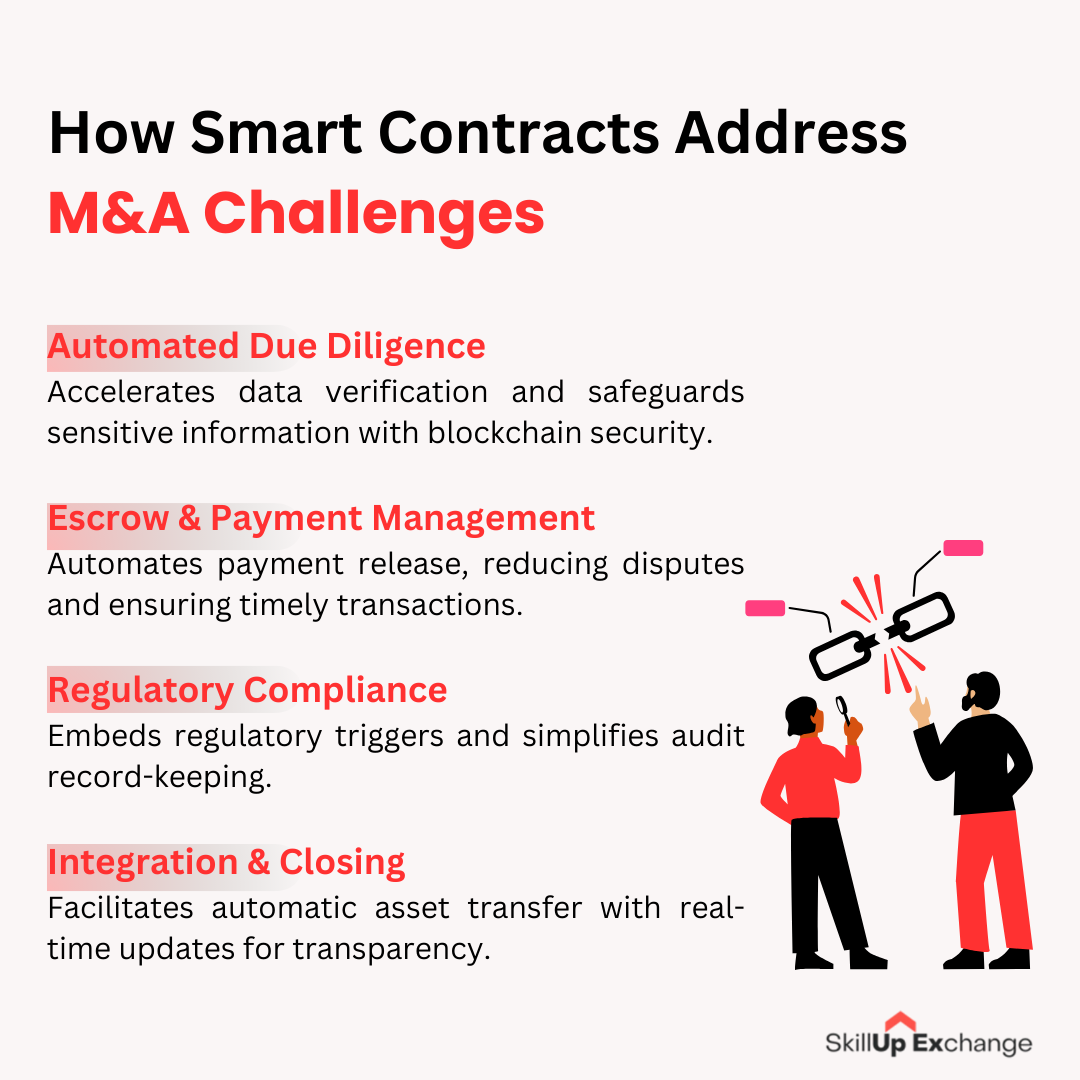
Smart contracts introduce a layer of efficiency and security in M&A transactions, addressing some of the most pressing challenges:
- Automated Due Diligence:
- Blockchain enables secure data storage and sharing, ensuring that sensitive information is safeguarded and easily accessible to authorized parties.
- Financial records and compliance documents can be verified much faster, eliminating unnecessary delays in due diligence processes.
- Escrow & Payment Management:
- With predefined conditions embedded in smart contracts, funds are released automatically once all requirements are met, reducing the likelihood of disputes or fraud.
- This automation ensures timely payment execution, reducing reliance on intermediaries.
- Regulatory Compliance:
- Smart contracts can integrate regulatory obligations as pre-programmed triggers, automatically initiating filings and updates when specific conditions are fulfilled.
- They simplify record-keeping for audits by maintaining a clear and immutable history of all relevant actions.
- Integration & Closing:
- The transfer of assets, shares, or other transaction elements happens automatically when contractual conditions are met, cutting down on manual interventions.
- Stakeholders receive real-time updates, ensuring transparency and fostering trust throughout the transaction process.
Potential Roadblocks & Considerations
While smart contracts offer many advantages, there are several challenges that organizations must address to ensure successful implementation in M&A transactions:
- Legal and Regulatory Uncertainty: Regulations governing smart contracts differ widely across regions. Some jurisdictions may not yet recognize their enforceability, necessitating supplemental legal frameworks. This uncertainty can delay adoption and complicate cross-border transactions.
- Technical Complexity: Developing smart contracts requires specialized expertise in both programming and blockchain technology. Ensuring that the contracts are error-free and secure involves rigorous testing, which can be resource-intensive. Additionally, ongoing maintenance is critical to mitigate vulnerabilities.
- Interoperability Challenges: Integrating smart contracts with existing legacy systems and external platforms can be a daunting task. Seamless compatibility is essential for a smooth workflow, yet differences in system architectures may lead to significant delays and additional costs.
Smart contracts offer a transformative opportunity to enhance M&A transactions by automating processes, reducing costs, and increasing transparency. Despite challenges—particularly regarding regulatory acceptance and technical intricacies—strategic planning, pilot projects, and collaboration between legal and technology teams can address these obstacles. To further refine the application of advanced technologies in M&A, readers are encouraged to explore our blog, “7 Strategies for Improving Generative AI Accuracy in M&A.” This piece dives deeper into how AI-driven tools complement blockchain innovations, paving the way for more efficient, accurate, and reliable transactions. As adoption grows, smart contracts and generative AI are set to become cornerstones of modern M&A strategies.
